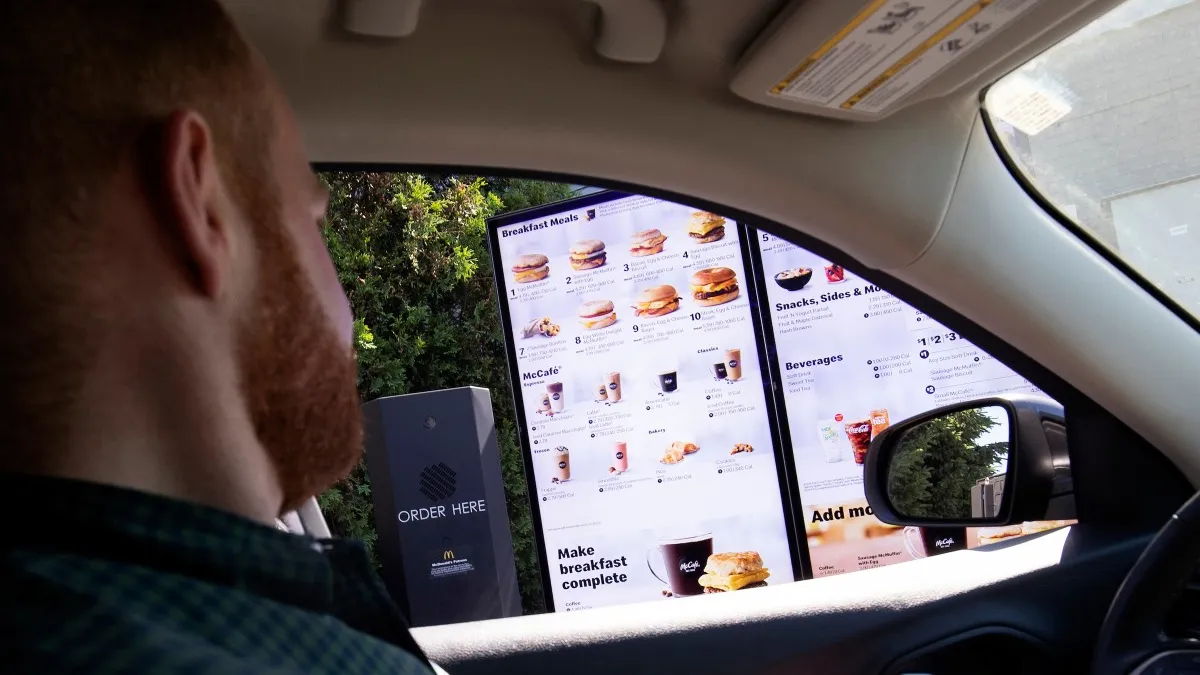Dive Brief:
- A three-year slump appears to be over for the 500 largest restaurant chains, according to a new report from Technomic, with an estimated $329.1 billion in U.S. restaurant sales for 2019. This represents a 3.7% increase over 2018.
- Part of the renewed growth is likely attributable to the increase in delivery options for consumers, with many restaurants launching new partnerships with third-party delivery services, Technomic manager of industry research Kevin Schimpf told Restaurant Business.
- A few of the biggest chains are also experiencing notable growth, including Chick-fil-A, McDonald's, Starbucks, Taco Bell, Domino's and Chipotle.
Dive Insight:
The biggest players in the restaurant space have the deepest pockets and the most store locations, making it easier for them to try new offerings and innovations to boost sales. Smaller chains tend to be more risk-averse, often lacking the same marketing budgets, research and development departments and ability to renovate their stores for a refresh.
But small brands can still benefit from the dollars that industry-leading chains pour into improving sales. The big players have to bear the risk of trying innovations that may fizzle, or receive customer backlash over bad ideas, allowing the smaller formats to wait quietly on the periphery to see what's worth investing in and what's worth skipping.
Chick-fil-A has had a great year, and it's 15% jump in sales over last year is a testament to its efforts, including a new branded delivery car pilot in Georgia. But the chain has also managed to build a strong brand intimacy with consumers thanks in large part to its unwavering commitment to customer service, including a tableside button that allows users to call a server. While delivery and digital offerings like self-order kiosks and AI-powered drive-thru menus may be the most popular investments for restaurants today, this highlights the importance of consumer connection.
This paradigm plays out in the emerging delivery space, where consumers and restaurants alike are trying to find their footing among third-party apps like Grubhub, DoorDash and Uber Eats, as well as in-house platforms. But delivery is still a relatively new concept and its ability to buoy sluggish restaurant sales may lose fervor as consumers become increasingly oversaturated with delivery options, or as the technology reaches its limitations. There are only so many ways that a delivery service can differentiate, with the two most important factors to consumers often being speed and accuracy. If a service can't get the right order to a user quickly enough, they'll likely try a new service regardless of all the bells and whistles that the service may have to offer.
Some delivery apps are already trying envelope-pushing concepts to find the outer limits of consumers' desire for delivery. Uber is testing a dine-in option that lets you order ahead and immediately sit down with your order when you arrive as well as delivering in airports. It's also testing drone delivery with McDonald's in San Diego to see if this option can reach more customers. As delivery and other off-premise initiatives continue to evolve to meet consumer demand, this channel could provide continued paths to growth for restaurant chains big and small in the near future.











